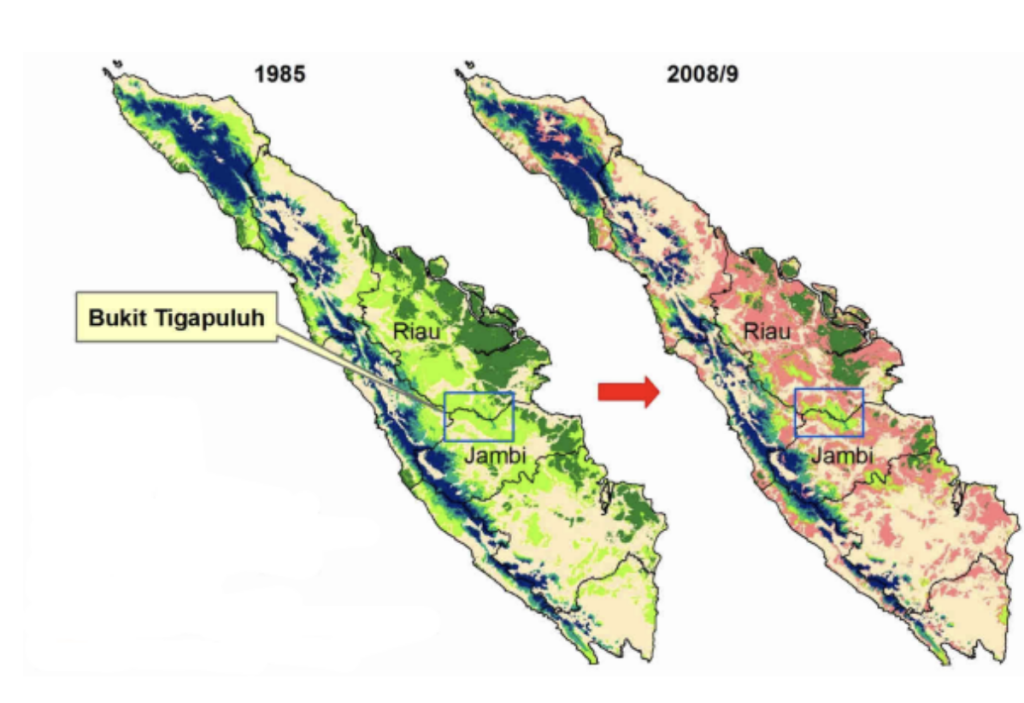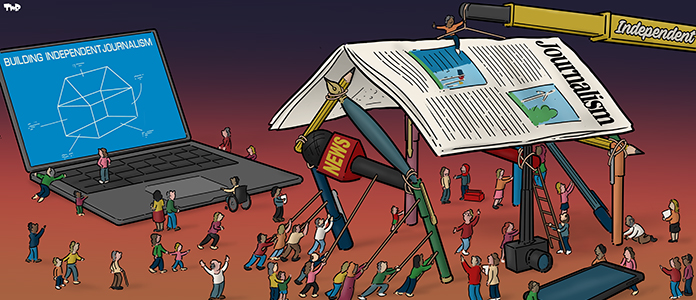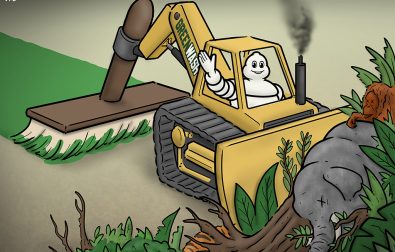Chapter 4
In previous chapters, we revealed how Michelin and the stakeholders of the Tropical Landscapes Finance Facility (TLFF) – the platform that issued the green bonds used by Michelin and its Indonesian partner Barito Pacific to finance the development of their rubber plantations (see chapters 1, 2 and 3) – concealed and then downplayed the ecological devastation caused by Royal Lestari Utama (RLU). RLU had cleared the forest just before the French company became a minority shareholder in late 2014. (Barito then held 51% of the property, which was eventually bought out in summer 2022 by Michelin.)
👉 All the articles from our investigation are available here.
Both the opinions of environmental experts and the documents that Voxeurop has consulted lead to the same conclusion: the land that was turned into rubber plantations before Michelin acquired its stake in RLU should have been preserved. It was part of the large forest ecosystem of Bukit Tigapuluh, or "Thirty Hills".
The destruction of this habitat renders Michelin’s and Barito's project non-compliant with the international standards that the two partners committed to when they used green bonds to finance it. In reality, Barito's enterprise started long before the two actors formalised their collaboration at the end of 2014 (see Chapter 3).
Straddling the provinces of Jambi and Riau (the most deforested in Sumatra), the green expanse of Bukit Tigapuluh includes the national park of the same name, established in 1995, as well as the surrounding forests – or at least what remains of them today. At the time that Lestari Asri Jaya (LAJ), a local subsidiary of RLU, obtained its clearing permit in Jambi, these forests made up almost half of the Bukit ecosystem. As of 2010, the total forest cover was 320,000 hectares (20% of which falls within the current LAJ concession). This was already only half of the 622,000 recorded in 1985, according to a 2010 report co-authored by several NGOs, including the Indonesian branch of WWF.

Do you like our work?
Help multilingual European journalism to thrive, without ads or paywalls. Your one-off or regular support will keep our newsroom independent. Thank you!



















